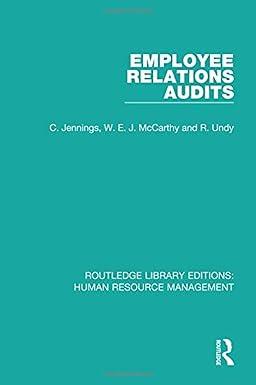Question
Measures of liquidity, Solvency and Profitability The comparative financial statements of Marshall Inc. are as follows. The market price of Marshall Inc. common stock was
Measures of liquidity, Solvency and Profitability The comparative financial statements of Marshall Inc. are as follows. The market price of Marshall Inc. common stock was $ 67 on December 31, 20Y2. Marshall Inc. Comparative Retained Earnings Statement For the Years Ended December 31, 20Y2 and 20Y1 20Y2 20Y1 Retained earnings, January 1 $ 2,214,075 $ 1,874,625 Net income 496,400 384,000 Total $ 2,621,375 $ 2,258,625 Dividends On preferred stock $ 6,300 $ 6,300 On common stock 38,250 38,250 Total dividends $ 44,550 $ 44,550 Retained earnings, December 31 $ 2,665,925 $ 2,214,075 Marshall Inc. Comparative Income Statement For the Years Ended December 31, 20Y2 and 20Y1 20Y2 20Y1 Sales $ 3,066,000 $ 2,824,840 Cost of goods sold 1,086,240 999,340 Gross profit $ 1,979,760 $ 1,825,500 Selling expenses $ 689,400 $ 834,540 Administrative expenses 587,270 490,130 Total operating expenses 1,276,670 1,324,670 Income from operations $ 703,090 $ 500,830 Other income 37,010 31,970 $ 740,100 $ 532,800 Other expense (interest) 176,000 96,800 Income before income tax $ 564,100 $ 436,000 Income tax expense 67,700 52,000 Net income $ 496,400 $ 384,000 Marshall Inc. Comparative Balance Sheet December 31, 20Y2 and 20Y1 Dec. 31, 20Y2 Dec. 31, 20Y1 Assets Current assets Cash $ 489,350 $ 490,150 Marketable securities 740,640 812,250 Accounts receivable (net) 525,600 496,400 Inventories 394,200 306,600 Prepaid expenses 92,578 98,030 Total current assets $ 2,242,368 $ 2,203,430 Long-term investments 1,424,297 596,790 Property, plant, and equipment (net) 2,860,000 2,574,000 Total assets $ 6,526,665 $ 5,374,220 Liabilities Current liabilities $ 700,740 $ 990,145 Long-term liabilities Mortgage note payable, 8 % $ 990,000 $ 0 Bonds payable, 8 % 1,210,000 1,210,000 Total long-term liabilities $ 2,200,000 $ 1,210,000 Total liabilities $ 2,900,740 $ 2,200,145 Stockholders' Equity Preferred $ 0.70 stock, $ 50 par $ 450,000 $ 450,000 Common stock, $ 10 par 510,000 510,000 Retained earnings 2,665,925 2,214,075 Total stockholders' equity $ 3,625,925 $ 3,174,075 Total liabilities and stockholders' equity $ 6,526,665 $ 5,374,220 Required: Determine the following measures for 20Y2, rounding to one decimal place, except for dollar amounts, which should be rounded to the nearest cent. Use the rounded answer of the requirement for subsequent requirement, if required. Assume 365 days a year. 1. Working capital $ 1,541,628 2. Current ratio 3.2 3. Quick ratio 2.7 4. Accounts receivable turnover 5. Number of days' sales in receivables days 6. Inventory turnover 7. Number of days' sales in inventory days 8. Ratio of fixed assets to long-term liabilities 9. Ratio of liabilities to stockholders' equity 10. Times interest earned 11. Asset turnover 12. Return on total assets % 13. Return on stockholders equity % 14. Return on common stockholders equity % 15. Earnings per share on common stock $ 16. Price-earnings ratio 17. Dividends per share of common stock $ 18. Dividend yield % Feedback 1. Subtract current liabilities from current assets. 2. Divide current assets by current liabilities. 3. Divide quick assets by current liabilities. Quick assets are cash, temporary investments, and receivables. 4. Divide sales by average accounts receivable. Average Accounts receivable = (Beginning Net Accounts Receivable + Ending Net Accounts Receivable) 2. 5. Divide average accounts receivable by average daily sales. Average Accounts receivable = (Beginning Net Accounts Receivable + Ending Net Accounts Receivable) 2. Average daily sales are sales divided by 365 days. 6. Divide cost of goods sold by average inventory. Average Inventory = (Beginning Inventories + Ending Inventories) 2. 7. Divide average inventory by average daily cost of goods sold. Average Inventory = (Beginning Inventories + Ending Inventories) 2. Average daily cost of goods sold are cost of goods sold divided by 365 days. 8. Divide property, plant and equipment (net) by long-term liabilities. 9. Divide total liabilities by total stockholders' equity. 10. Divide the sum of income before income tax plus interest expense by interest expense. 11. Divide sales by average total assets, excluding long-term investments. Average total assets = (Beginning total assets + Ending total assets) 2. 12. Divide the sum of net income plus interest expense by average total assets. Average total assets = (Beginning total assets + Ending total assets) 2. 13. Divide net income by average total stockholders' equity. Average total stockholders' equity = (Beginning total stockholders' equity + Ending total stockholders' equity) 2. 14. Divide net income minus preferred dividends from the retained earnings statement by average common stockholders' equity. Common stockholders' equity = Common stock + Retained earnings. Average common stockholders' equity = (Beginning common stockholders' equity + Ending common stockholders' equity) 2. 15. Divide net income minus preferred dividends from the retained earnings statement by common shares outstanding (common stock par value). 16. Divide common market share price by common earnings per share (use answer from requirement 15). 17. Divide common dividends (from Retained Earnings Statement) by common shares outstanding (common stock par value). 18. Divide common dividends per share (use answer from requirement 17) by market share
Step by Step Solution
There are 3 Steps involved in it
Step: 1

Get Instant Access to Expert-Tailored Solutions
See step-by-step solutions with expert insights and AI powered tools for academic success
Step: 2

Step: 3

Ace Your Homework with AI
Get the answers you need in no time with our AI-driven, step-by-step assistance
Get Started


